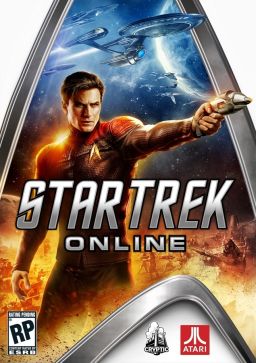Self-Promotion
Yes, self-promotion matters!
This is in response to the Boldly Reading blog prompt #5.
Sell yourself. Sell your story.
The prompts to date have been of a more reflective nature. Asking you to pose questions of yourselves. Not an easy thing to do. However, I think this next prompt is a little harder to do. I want you to sell yourself. Sell your story. Sell your character.
This is a little opportunity to give yourself a little love. This is a chance to advertise a story of yours you have a soft great big proud spot for. To talk our arms off about a character or characters of yours that you positively gush over. Perhaps maybe you’ve a story that’s been missed over or a character not quite got by the readership. Well, here’s your opportunity to tell us about them in your words. Don’t worry about it being egotistical (cos I’m telling you to do it – so there’s no vanity of vanities going on). Don’t suggest another person’s story/character to write about (cos that will be a prompt down the line). Just write about a story/series/character of yours you want to shine a light on.
Love, Sex, Forever and the Afterworld
For Star Trek fan fiction, a truly irresistible scenario is ENT’s E2 episode.

Lorian
In this canon story line, the NX-01shoots back in time to 2037, and the ship turns generational. In canon, Hoshi marries and has two children, Toru and Yoshiko. Phlox marries MACO Corporal Amanda Cole and they have nine children. Jonathan weds an Ikaaran woman named Esilia. Tripp and T’Pol wed and have a son, Lorian. Travis marries MACO J. McKenzie (I name her Julie). And Malcolm dies without offspring.
That’s Star Trek: Enterprise canon.
My Spin (and Self-Promotion)
Fairly recently, I wrote a series which encompasses this time period. I wanted to add an extra layer to it all. So there are actually two kick backs in time. One is, in some ways, happier than the other. But they both have their purposes.
Lili is of course present, as is Jay Hayes, who is not in the episode but naturally had to have been there. One group of secondary characters who make appearances are the characters from The Light, such as Karin Bernstein, Andy Miller, Josh Rosen, Ethan Shapiro and Azar Hamidi. Azar is given a love interest, Maryam Haroun, and a rival, the canon character R. Azar, who I have named Ramih.
Other secondary characters in the mix are Chip Masterson, Deb Haddon, Brian Delacroix, Craig Willets, Jenny Crossman, Aidan MacKenzie, Quartermaster Sekar Khan, MACO Frank Todd, David Constantine, José Torres, Chef Will Slocum, canon MACO Daniel Chang, Sandra Sloane, Shelby Pike, Gary Hodgkins, Tristan Curtis, semi-canon character Patti Socorro, Diana Jones, Meredith Porter, Rex Ryan and several others, enough to populate a ship with nearly ninety regular crew members. Time traveler Richard Daniels even makes a few appearances, as does Jay’s old girlfriend, Susan Cheshire.
Four Books
There are four books in total. The first of these is Reflections Down a Corridor. The crew begins to come to grips with the fact that they are never, ever going home again. People, tentatively, begin to explore each other. And the ship starts to commit to surviving in the Delphic Expanse. They obtain two planets, Amity and Paradise, and begin to hunt procul. But watch out for the malostrea! And, in addition to Xindi, the Enterprise also has to deal with a species from my own fiction, the Imvari.
The second book covers more of the many hookups and relationships, both positive and negative, that such a scenario generates. It also contains some rather disturbing scenes. It’s called Entanglements and is the shortest of the four pieces.
Three and Four
The third book, The Three of Us, continues the first kick back in time, as the uneven ratio between men and women begins to be better resolved. The Ikaarans are brought onto the ship. I have expanded their culture and physiology beyond the scraps from canon. There is one main triad that is the three people of the title. But, there are other groups of three that the reader should be looking for. And this is also where Lili’s dreaming starts to get interesting. Her subconscious fears are allayed by dreams of the not yet born Doug Beckett. Even more disturbing scenes pepper this story, and a reference in Multiverse II should be a bit clearer here.
The fourth and final book, Everybody Knows This is Nowhere, brings the first kick back in time to 2154, as the second kick back occurs. And it then slips in more final pieces of the puzzle as the second kick back (as in canon) meets the people of the prime timeline. And, after Jay’s canon death, his will is read, and bequests are given. Because the beginning of Everybody Knows is quite rough on the characters, Lili is again comforted subconsciously. But this time her comforter is Malcolm’s counterpart, the as-yet unborn Ian Reed, a character seen in the story Throwing Rocks at Looking Glass Houses. As in The Three of Us, disturbing sequences are placed within the story line, and readers of Multiverse II will recognize one character.
Why It’s Part of My Self-Promotion
It’s not just because it’s a labor of love, dense with characters and plot. I also like the message of it, the overall arcs, too. Depression gallops among the crew. People do bad things. And they also do very good ones, and I like to think that the characters are believable. I visit the below decks world over and over again, and not just from Lili’s perspective. Time passes, and when you’re not exploring, that time sometimes passes in odd ways. People say things about each other (or write them in log entries) that are cruel, or are kind, or are incomprehensible. Behavior is not always justified or understood. And that’s what real life is like.
More Self-Promotion
I have seen other fan fiction about this time period, and it is often extremely ‘shippy. I will admit that Entanglements in particular is pretty relationship-centric. But in some ways it has to be. Time is ticking and people have got to line up their ducks. And they do so in strange ways, some of which are more romantic than others. And they sometimes have Buyer’s Remorse as well.
I also wanted to give it some action outside of bedrooms. There are a few battles, and some nasty crimes, which have consequences and aftershocks. Not everyone comes off well. Sometimes silly things happen, too. Through it all, I present the message, that real love is forever, and it crosses every plane we can think of, and a lot that we haven’t. It’s hopefully loud and clear but not too heavy-handed.
I put a great deal of work into working out the plotting and giving the characters their due. It’s a bit of a cast of thousands or at least dozens. Personalities don’t always shine through as well as maybe they should. But I like to think that most of the characters are knowable, even if they aren’t sympathetic.
Upshot
There is a time commitment in reading this series, to be sure. But I hope that the reader feels rewarded at the end. And I hope that others will take a chance on it. I hope they’ll follow my self-promotion.










